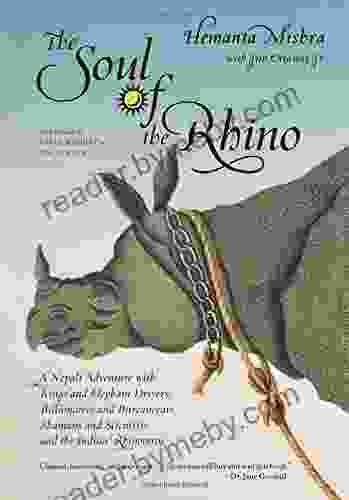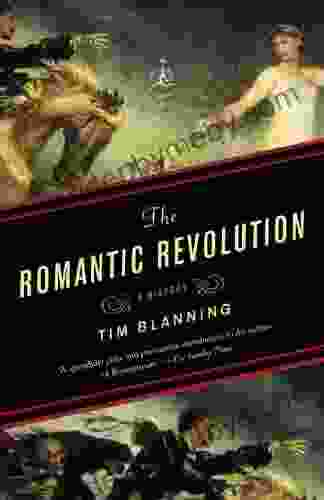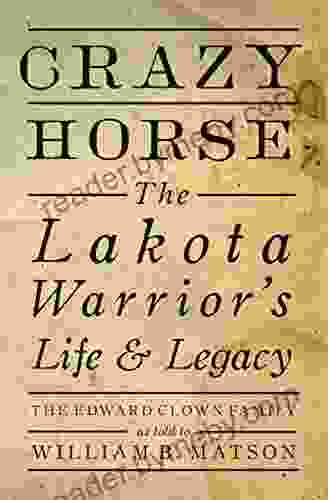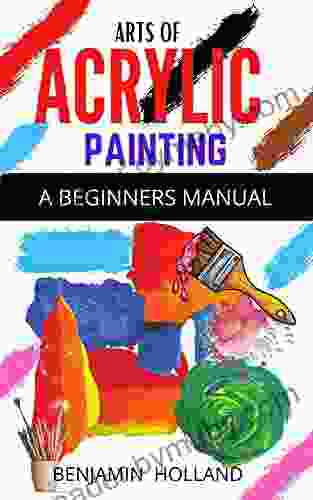The Total Art Of Stalinism: Avant Garde Aesthetic Dictatorship And Beyond

The term "avant-garde" has been used to describe a wide range of artistic and cultural movements that have sought to challenge the status quo and push the boundaries of what is considered acceptable or conventional. Avant-garde aesthetics, in particular, have often sought to disrupt traditional notions of beauty, harmony, and Free Download. In recent years, there has been a growing interest in the relationship between avant-garde aesthetics and dictatorship. Some critics have argued that the avant-garde's rejection of traditional values and its embrace of radical experimentation have made it a fertile ground for the development of dictatorial regimes. Others have countered that the avant-garde's commitment to freedom of expression and its opposition to censorship have made it a natural enemy of dictatorship.
In this essay, I will explore the complex and often contradictory relationship between avant-garde aesthetics and dictatorship. I will begin by examining the historical roots of avant-garde aesthetics in the late 19th and early 20th centuries. I will then discuss the ways in which avant-garde aesthetics have been used to support and legitimize dictatorial regimes. Finally, I will consider the ways in which avant-garde aesthetics have been used to resist and challenge dictatorship.
The Historical Roots of Avant-Garde Aesthetics
The term "avant-garde" was first used in the early 19th century to describe a military unit that was positioned at the forefront of an army. By the late 19th century, the term had been adopted by a group of artists and writers who sought to challenge the dominant aesthetic conventions of their time. These artists and writers believed that traditional forms of art and literature had become stale and irrelevant, and they sought to create new forms of art that would reflect the modern world.
4.5 out of 5
| Language | : | English |
| File size | : | 3324 KB |
| Text-to-Speech | : | Enabled |
| Screen Reader | : | Supported |
| Enhanced typesetting | : | Enabled |
| Word Wise | : | Enabled |
| Print length | : | 142 pages |
The avant-garde's rejection of traditional aesthetics was often expressed through the use of radical experimentation. Avant-garde artists and writers experimented with new materials, new techniques, and new forms of expression. They sought to create art that was shocking, disruptive, and challenging.
The avant-garde's commitment to experimentation was also reflected in its embrace of new technologies. Avant-garde artists and writers were among the first to use photography, film, and radio in their work. They believed that these new technologies had the potential to revolutionize the way that art was created and experienced.
The avant-garde's rejection of tradition and its embrace of experimentation made it a natural target for criticism. Traditionalists condemned the avant-garde for its lack of respect for the past and its disregard for the rules of art. However, the avant-garde's supporters argued that it was necessary to break with the past in Free Download to create a new and more vibrant future.
By the early 20th century, the avant-garde had become a major force in the art world. Avant-garde artists and writers were celebrated for their originality and their willingness to push the boundaries of what was considered acceptable. However, the avant-garde's success also led to its co-optation by the mainstream. By the 1950s, avant-garde aesthetics had become a staple of popular culture.
Avant-Garde Aesthetics and Dictatorship
The relationship between avant-garde aesthetics and dictatorship is complex and often contradictory. On the one hand, some critics have argued that the avant-garde's rejection of traditional values and its embrace of radical experimentation have made it a fertile ground for the development of dictatorial regimes. These critics argue that the avant-garde's willingness to break with the past and its commitment to creating a new Free Download make it a natural ally for dictators who seek to impose their own vision of the future.
On the other hand, other critics have argued that the avant-garde's commitment to freedom of expression and its opposition to censorship have made it a natural enemy of dictatorship. These critics argue that the avant-garde's insistence on the right to dissent and its refusal to be co-opted by the state make it a threat to any regime that seeks to control the flow of information.
In reality, the relationship between avant-garde aesthetics and dictatorship is more nuanced than either of these two extremes would suggest. The avant-garde has been both used to support and legitimize dictatorial regimes and to resist and challenge them.
Avant-Garde Aesthetics and the Support of Dictatorship
In some cases, avant-garde aesthetics have been used to support and legitimize dictatorial regimes. For example, the Italian Futurists, who were one of the most influential avant-garde movements of the early 20th century, were enthusiastic supporters of the Fascist regime of Benito Mussolini. The Futurists believed that Fascism was the only political movement that could bring about the radical social and cultural transformation that they desired. They celebrated Fascism's embrace of violence and its rejection of traditional values, and they saw it as a necessary step towards the creation of a new and more modern world.
Similarly, the Russian Constructivists, who were one of the most influential avant-garde movements of the 1920s, were initially supportive of the Soviet Union. The Constructivists believed that the Soviet Union was the only country that could provide the material conditions necessary for the development of a new and more progressive art. They celebrated the Soviet Union's commitment to industrialization and its rejection of traditional forms of art, and they saw it as a laboratory for the creation of a new and more just society.
However, the relationship between the avant-garde and these dictatorial regimes was not always straightforward. The Futurists and the Constructivists were often critical of the regimes that they supported, and they were not afraid to express their dissent. For example, the Futurists were critical of Mussolini's censorship of the press, and the Constructivists were critical of Stalin's suppression of artistic freedom.
Despite these criticisms, the avant-garde's association with dictatorship has left a lasting legacy. Even today, the avant-garde is often seen as a dangerous and subversive force, and its association with dictatorship is often used to discredit it.
Avant-Garde Aesthetics and the Resistance to Dictatorship
Despite its association with dictatorship, the avant-garde has also been used to resist and challenge dictatorial regimes. For example, the Dadaists, who were one of the most influential avant-garde movements of the early 20th century, were fiercely opposed to the war and the rise of Fascism. The Dadaists used their art to ridicule and subvert the values of the ruling class, and they called for a radical social and cultural revolution.
Similarly, the Surrealists, who were one of the most influential avant-garde movements of the 1920s and 1930s, were also opposed to Fascism and war. The Surrealists believed that the irrational and the unconscious were more powerful forces than reason and logic, and they used their art to explore the hidden depths of the human psyche. They saw their art as a way of liberating people from the constraints of traditional thought and behavior.
The avant-garde's commitment to freedom of expression and its opposition to censorship have made it a natural enemy of dictatorship. Avant-garde artists and writers have been among the most vocal critics of dictatorial regimes, and they have often used their art to challenge the status quo and call for change.
The Legacy of Avant-Garde Aesthetics
The avant-garde has had a profound impact on the development of modern art. Avant-garde artists and writers have pushed the boundaries of what is considered acceptable and conventional, and they have helped to create a more open and tolerant society. However, the avant-garde's relationship with dictatorship is a complex and contradictory one. The avant-garde has been both used to support and legitimize dictatorial regimes and to resist and challenge them.
Ultimately, the legacy of the avant-garde is a mixed one. The avant-garde has been a force for both good and evil, and it is up to us to decide how we will use it.
4.5 out of 5
| Language | : | English |
| File size | : | 3324 KB |
| Text-to-Speech | : | Enabled |
| Screen Reader | : | Supported |
| Enhanced typesetting | : | Enabled |
| Word Wise | : | Enabled |
| Print length | : | 142 pages |
Do you want to contribute by writing guest posts on this blog?
Please contact us and send us a resume of previous articles that you have written.
 Book
Book Novel
Novel Page
Page Chapter
Chapter Text
Text Story
Story Genre
Genre Reader
Reader Library
Library Paperback
Paperback E-book
E-book Magazine
Magazine Newspaper
Newspaper Paragraph
Paragraph Sentence
Sentence Bookmark
Bookmark Shelf
Shelf Glossary
Glossary Bibliography
Bibliography Foreword
Foreword Preface
Preface Synopsis
Synopsis Annotation
Annotation Footnote
Footnote Manuscript
Manuscript Scroll
Scroll Codex
Codex Tome
Tome Bestseller
Bestseller Classics
Classics Library card
Library card Narrative
Narrative Biography
Biography Autobiography
Autobiography Memoir
Memoir Reference
Reference Encyclopedia
Encyclopedia Tom Doctoroff
Tom Doctoroff N D Wilson
N D Wilson Mark Perry
Mark Perry Peniel E Joseph
Peniel E Joseph Watt Key
Watt Key Shafiullah S A
Shafiullah S A Larry K Brendtro
Larry K Brendtro Liz Wiseman
Liz Wiseman Mike Yoshiaki Daikubara
Mike Yoshiaki Daikubara Richard A Jaffe
Richard A Jaffe Koren Zailckas
Koren Zailckas Richard Lecocq
Richard Lecocq Nina Freudenberger
Nina Freudenberger Vivian Chong
Vivian Chong Jill Santopolo
Jill Santopolo Rick Yagodich
Rick Yagodich Norman Hathaway
Norman Hathaway Swapna Reddy
Swapna Reddy Robin Riley
Robin Riley Peter James West
Peter James West
Light bulbAdvertise smarter! Our strategic ad space ensures maximum exposure. Reserve your spot today!
 Ryūnosuke AkutagawaFollow ·16.5k
Ryūnosuke AkutagawaFollow ·16.5k Floyd PowellFollow ·5.7k
Floyd PowellFollow ·5.7k Charles ReedFollow ·6.6k
Charles ReedFollow ·6.6k Michael SimmonsFollow ·7.5k
Michael SimmonsFollow ·7.5k Ignacio HayesFollow ·4.1k
Ignacio HayesFollow ·4.1k Corey GreenFollow ·13k
Corey GreenFollow ·13k Kevin TurnerFollow ·13.2k
Kevin TurnerFollow ·13.2k Seth HayesFollow ·7.2k
Seth HayesFollow ·7.2k

 Wayne Carter
Wayne CarterThe Beginner's Guide to Making an Old Motor Run Forever
If you're like most...

 Deacon Bell
Deacon BellNepali Adventure: Kings and Elephant Drivers,...
In the heart of the...

 Carlos Drummond
Carlos DrummondThe Romantic Revolution: A Journey Through History and...
Unveiling the...

 Kazuo Ishiguro
Kazuo IshiguroUnlock Your Inner Innovator: Dive into the New Wave...
Embark on a Transformative Journey of...

 William Golding
William GoldingCrazy Horse: The Lakota Warrior's Life and Legacy
In the annals of Native...

 Hector Blair
Hector BlairMildred and Richard Loving: The Inspiring Story of...
Mildred and Richard Loving were an...
4.5 out of 5
| Language | : | English |
| File size | : | 3324 KB |
| Text-to-Speech | : | Enabled |
| Screen Reader | : | Supported |
| Enhanced typesetting | : | Enabled |
| Word Wise | : | Enabled |
| Print length | : | 142 pages |












